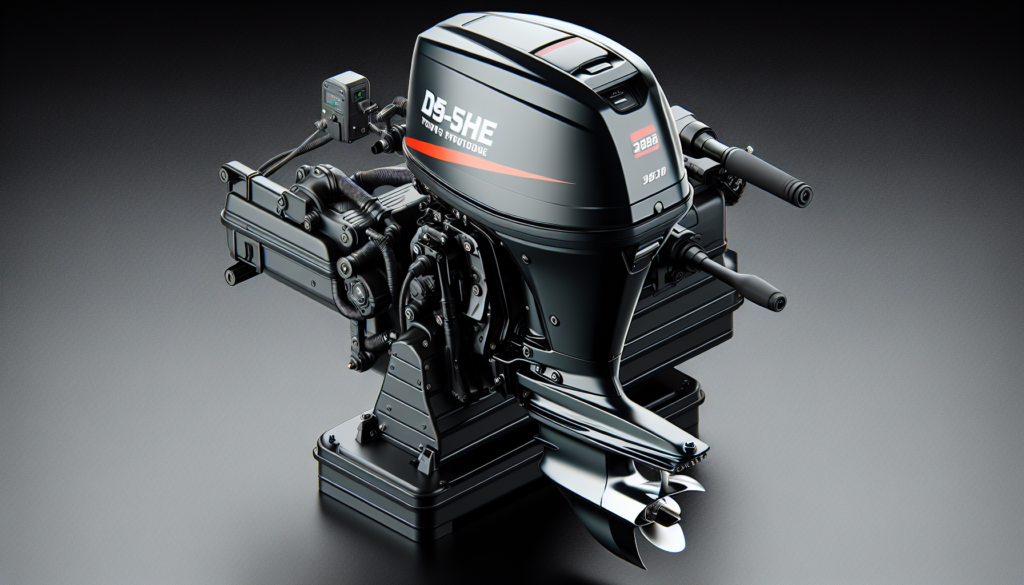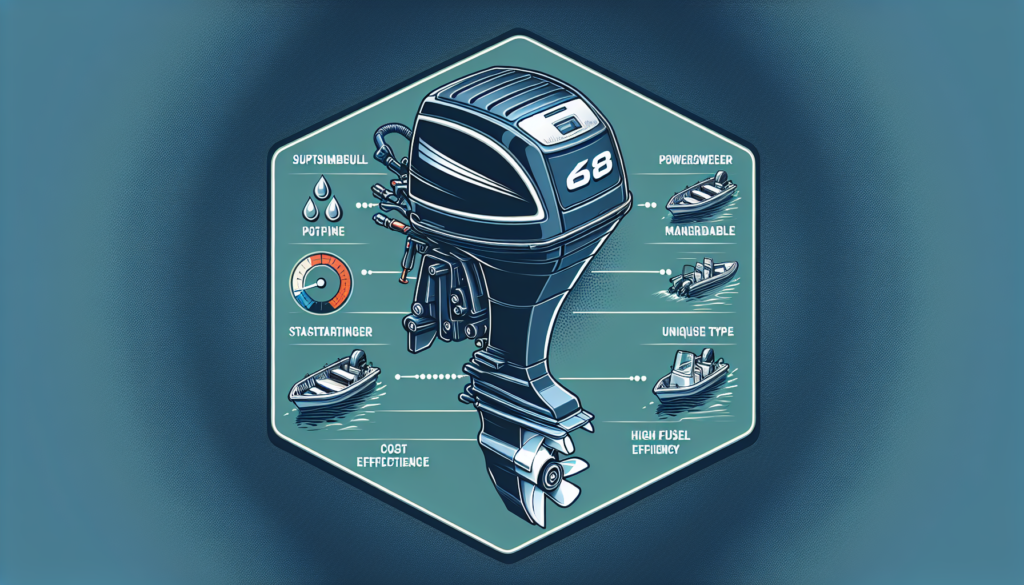Navigating the world of outboard motors for small boats can feel like traversing the seven seas without a map. It’s a world filled with talk of Horsepower, strokes, and a plethora of motor types—you might even think you need to be an engineer to understand it all! But don’t let these jargon-filled waters discourage you. In this easy-to-understand guide, you’ll find all the necessary information you need to make an informed buying decision for the best outboard motor for your small boat. From distinguishing the difference between two-stroke and four-stroke engines, to understanding horsepower and what it means for your nautical escapades, this guide will steer you in the right direction. Let’s chart a course to find your perfect power match!

Understanding Outboard Motors
If you spend a lot of time in the water, and particularly if you own a boat, you’ve probably heard the term “outboard motor” thrown around quite a bit. Outboard motors are essential for several watercrafts, but what exactly are they?
Definition of Outboard Motors
In the simplest terms, an outboard motor is an engine designed for boats that mounts on the outside of the vessel, at the stern or rear. It is a self-contained unit, comprising parts such as the engine, propulsion mechanism, and steering control—all in one compact design.
How Outboard Motors Work
Outboard motors work by propelling watercraft through water. When the motor is powered on, it generates power that is then transmitted to a propeller. The rotating propeller pushes water out behind it, creating a forward thrust that moves the boat. These motors also come with a steering mechanism that turns the entire motor, allowing you to control the direction of your boat.
Advantages of using Outboard Motors
Aside from the obvious benefit of motion, outboard motors also come with several other advantages. Firstly, they are suitable for very shallow water due to the ability to lift the propeller out of the water, preventing damage. Secondly, their external mounting position saves space internally, leaving more room inside the boat for people and equipment. Lastly, if something goes wrong, the whole motor can be easily replaced without the need for intensive boat surgery.
Types of Outboard Motors
There are two main types of outboard motors: two-stroke and four-stroke motors. Two-stroke engines are usually lighter, simpler, and less expensive. On the other hand, four-stroke engines are known for their better fuel efficiency and lower emission levels. We’ll delve deeper into these types later in this guide.
Factors to Consider when Choosing Outboard Motors for Small Boats
A lot goes into selecting the right motor for your small boat. Different boats will need different kinds of motors based on a few key factors.
Size of the Boat
The bigger your boat, the bigger the power needed to move it. A small outboard motor that works well for a small kayak will struggle with a large powerboat.
Weight of the Boat
If your boat is heavy, it will require a stronger motor. The weight of the boat includes the base weight, added equipment, and the number of passengers it is expected to carry.
Purpose of the Boat
The usage of your boat also matters. A motor that’s perfect for leisurely fishing in a lake might not be up to the task of speeding through the open sea.
Motor’s Horsepower (HP)
HP is a measure of power. More HP means more speed, but it usually also comes with increased fuel use and cost.
Fuel Efficiency of the Motor
An efficient motor uses less fuel for the same output, saving you money in the long run. Consider the fuel economy of the motor first before deciding, especially if you plan for long trips or frequent usage.
Types of Outboard Engines
We talked about the two main types of outboard motors above. Now, let’s delve a little deeper.
Two-Stroke Engines
Two-stroke engines complete a power cycle in two strokes of the piston or one complete revolution of the crankshaft. They are lighter and simpler than four-strokes, usually cheaper, and offer the most power out of the two types.
Four-Stroke Engines
Four-stroke engines complete a power cycle in four strokes of the piston or two complete revolutions of the crankshaft. They are distinctly quieter, smoother running, more fuel-efficient, and emit fewer pollutants than two-strokes.
Electric Outboard Engines
Electric engines are quiet, pollution-free, and require very low maintenance. They are perfect for small boats used primarily for fishing or cruising in calm waters. However, they might lack the power needed for larger or faster boats.
Direct Fuel-Injection Engines
Direct Fuel-Injection (DFI) technology allows engines to be more fuel efficient and environmentally friendly. They are a more costly option, but the investment may pay off through lower running costs.
Understanding Horsepower (HP)
Horsepower defines the power of the motor, but there is more to this concept.
What is Horsepower?
Horsepower is a unit of work or energy. One horsepower is equivalent to 746 watts. In terms of engines, it is the power output available to propel the boat.
Calculating the Right Horsepower for Your Boat
Calculating the right HP for your boat depends on the total weight of the boat and the speed you wish to operate at. Boat manufacturers often specify the minimum and maximum horsepower recommended for their boats, providing a good starting point for your motor selection.
Impact of Over or Under Powering Your Boat
Correct powering is essential for the safety and efficiency of your boat. Overpowering can lead to uncontrolled speed and potential damage. On the other hand, underpowering can overload the engine, leading to increased fuel consumption and mechanical complications.

Fuel Efficiency and Consumption
Fuel efficiency and consumption affect your running costs and environmental impact.
Importance of Fuel Efficiency
A fuel-efficient motor will use less fuel to generate the same power, saving you money in the long run. It also decreases emissions, contributing to a healthier environment.
Comparing Fuel Efficiency between Two-Stroke and Four-Stroke Motors
Four-stroke engines tend to be more fuel-efficient than two-strokes. This is because, in a four-stroke cycle, fuel is consumed only once every four strokes, whereas in a two-stroke cycle, it’s consumed every other stroke.
Ways to Improve Fuel Efficiency
Improving fuel efficiency can be done by regular engine maintenance, ensuring the right propeller size for your boat, and eliminating unnecessary weight on the boat.
Evaluating Reliability and Durability of Outboard Motors
The reliability and durability of an outboard motor should be a top deciding factor.
Brand Reputation
One of the best ways to ensure the reliability of a motor is to look at the reputation of the brand.
Materials and Construction
The type of material used in the construction of the motor and the quality of the manufacturing process can give you a good idea of its overall durability.
Maintenance Records
The previous care and maintenance of the motor are also essential to understand its current condition.
Warranty and Support
Finally, the length and coverage of the warranty and the post-purchase support from the manufacturer also give insights into the reliability of the outboard motor.
Understanding Noise and Vibration Levels
Noise and vibration contribute significantly to the overall boating experience.
Noise Levels in Outboard Motors
Outboard motors can be quite noisy. Generally, two-stroke motors are noisier than their four-stroke counterparts. And while electric motors are incredibly quiet, they might not be suitable for all types of boats due to their limited power.
Impact of Vibration on Boating Experience
Apart from the noise, motors also produce vibrations which can be felt throughout the boat. Too much vibration can result in an uncomfortable ride and potentially cause equipment or structure failings.
How to Minimize Noise and Vibration
Motor quality, regular maintenance, and correct installation can help to minimize noise and vibration levels.
Understanding the Environmental Impact of Outboard Motors
Outboard motors, like any engines that burn fossil fuels, contribute to environmental pollution.
Emissions Standards for Outboard Motors
Emissions standards regulate the pollutants allowed to be emitted by outboard motors. Four-stroke engines and direct fuel-injection two-stroke engines typically meet these standards more easily than traditional two-stroke engines.
Comparison of Environmental Impact between Two-Stroke and Four-Stroke Motors
Two-strokes emit more pollutants due to their oil-mixed fuel and their tendency to expel unburned fuel. On the contrary, four-stroke engines burn cleaner, with fewer emissions.
Eco-friendly Outboard Motor Options
If you are concerned about environmental impact, consider electric outboard motors or advanced combustion engines like direct fuel-injection engines that minimize emissions.
Maintenance and Care for Outboard Motors
Proper maintenance of the outboard motor ensures long service life and optimal performance.
Routine Maintenance Tips
Regular oil changes, spark plug checks, and propeller inspection are essential for keeping your outboard motor in perfect running condition.
Winterizing Your Outboard Motor
If you live in a colder climate, winterizing your outboard motor when it’s not in use is critical. This process involves draining the fuel, applying protective oil, and properly storing the motor to prevent corrosion and damage.
Common Issues and Their Solutions
Awareness of common engine problems like overheating, difficulty starting, and performance issues, and their solutions can save you a lot of headaches.
When to Approach a Professional
While some maintenance tasks can be done by the boat owner, there are instances when professional help is needed, especially for tuning, major repairs, and pre-season preparation.
Choosing Between New and Used Outboard Motors
Finally, the choice between a new and used motor is often dictated by budget and preference.
Pros and Cons of New Motors
New motors offer state of the art tech, warranty coverage, and peace of mind regarding its maintenance history. However, they’re also more expensive.
Pros and Cons of Used Motors
Used motors are cheaper and can offer great value for money, but they may have unseen mechanical issues and might lack the latest features.
Verifying Condition of Used Motors
If you’re buying a used motor, have a professional inspect it for any possible issues, verify its maintenance history and do a test run to ensure it functions well.
Value for Money: New vs Used
Whether a new or used engine offers better value for money highly depends on the specific deals you can find. Always weigh the pros and cons carefully.
The choice of an outboard motor for a small boat may seem daunting at first, but with the right knowledge and understanding, you can make a confident decision that best suits your needs. Remember, a good deal is one that perfectly matches your boat and sailing needs. Happy boating!

